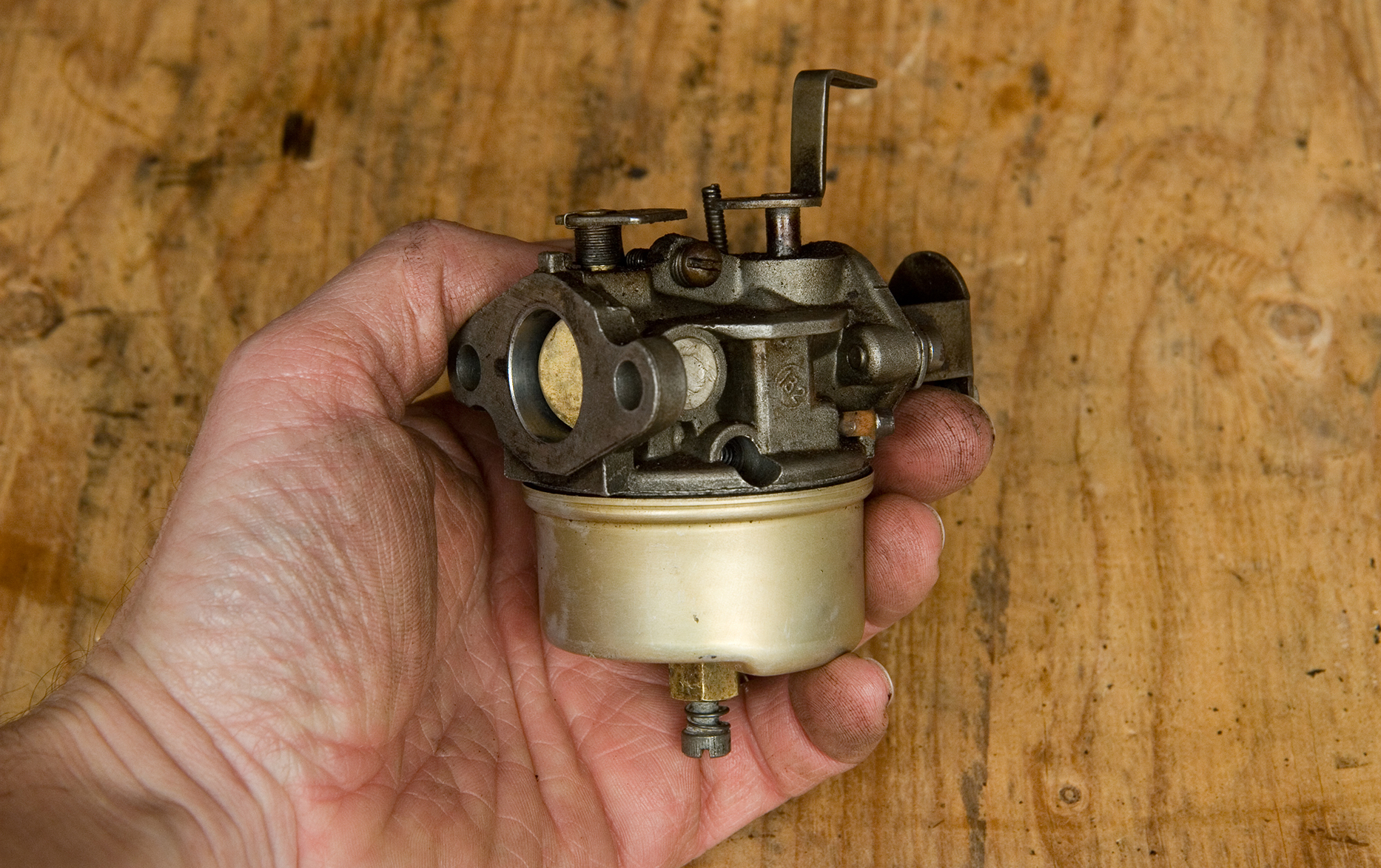HOW TO CLEAN A SMALL ENGINE CARBURETOR
Lawnmower carburetors, snowblower carburetors and other small engine carburetors share a common functionality; this is where gasoline and air mix before gas continues through the engine. Keeping a clean carburetor helps your machine work properly, prevents corrosion and saves the need for costly replacements.
The air intake can dry out the gas in your carburetor, resulting in a sticky substance that adheres to the walls of the carburetor and builds up over time. Infrequent use of an engine can also cause the gasoline to thicken, reducing the ability of the carburetor's small parts to move properly. Connections attached to the carburetor's throttle and choke plates can also become stuck when dirty. Lastly, if the carburetor gives off a smell of turpentine or a chemical odor different from the smell of gasoline, it's likely overdue for a cleaning.
However, it's important to use a non-corrosive cleaner which doesn't harm or degrade any plastic or rubber pieces on the carburetor. You should avoid using vinegar, because the acetic acid makes metal susceptible to rust. Additionally, bleach should never be used, because sodium hypochlorite (bleach) will corrode metals such as steel and aluminum, and degrade rubberized seals.


A safer option to harsh chemicals, Simple Green Pro HD Heavy-Duty Cleaner is biodegradable* and non-corrosive, safe for cleaning aluminum, stainless steel and other metals. The professional-grade, engine-safe formula breaks down tough grease, oil, road grime and other automotive fluids, making it ideal for cleaning your small engine carburetor.
Directions for How To Clean A Small Engine Carburetor:
Check your Owner's Manual before cleaning the carburetor. Always follow manufacturer's complete instructions for cleaning and maintenance. Make sure the carburetor is cool to the touch before cleaning.
- Dilute cleaner. In a large container, mix 1 part Simple Green Pro HD Heavy-Duty Cleaner to 3 parts water.
- Clear air filter. Before cleaning your carburetor, check the air filter to make sure that the air coming into the carburetor is clean and free of blockage, which can result in black smoke emissions from the exhaust. Shut off the fuel supply and disconnect the spark plug wire, if one exists. Remove the housing and the wing nut attaching the filter, and remove the outer element. Use a can of compressed air to remove debris.
- Remove the carburetor. Remove any covering plate or shield, as well as linkage and hoses using pliers and a screwdriver, where necessary. Remove any cover or clamps holding the carburetor in place, and remove the hose clamp that connects it to the fuel line. Remove the carburetor, and use compressed air to blow off any excess dirt on the outside casing. (Note: if unfamiliar with this procedure, consult with a professional before cleaning.)
- Remove carburetor float. Remove the bolt holding the carburetor float (bowl-shaped container) in place, being careful not to spill any remaining gas inside the float (dispose of this securely). This is a common point of varnish buildup on carburetors. Also remove the pin that the float pivots on, and place aside in a safe spot. Now pull the float straight out of its casing.
- Remove other removable components. Note the location and placement of any other carburetor components you're removing to allow cleaning access.
- Soak and scrub components. Submerge the carburetor float and other components in a large container with your Simple Green Pro HD solution, and soak thoroughly for 10 minutes. Use a brass brush to scrub all metal components, and a stiff nylon brush to scrub plastic pieces. Make sure the tiny vents get cleaned. Clean the small parts in the cleaning solution as well.
- Rinse and dry. Rinse all carburetor components in a bucket of clean water, and allow to air dry completely. For small holes and vents, use a can of compressed air to remove any excess moisture.
- Reassemble and replace. Carefully reassemble the carburetor, and mount it to the engine. Re-link all hoses, clamps and wires.



